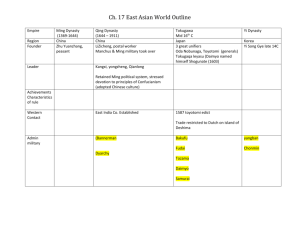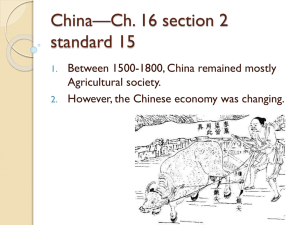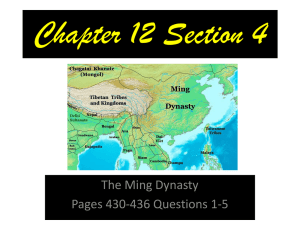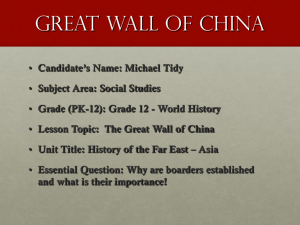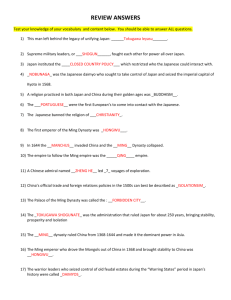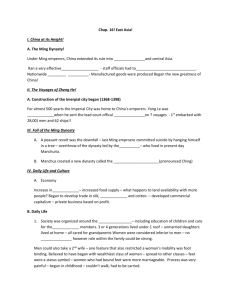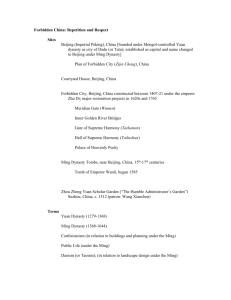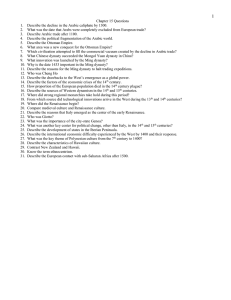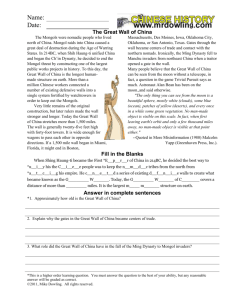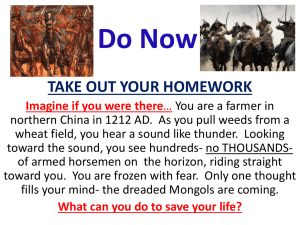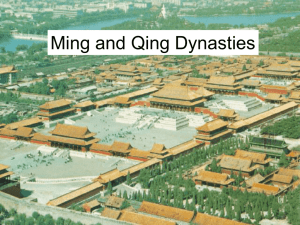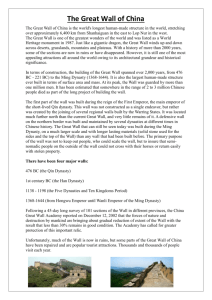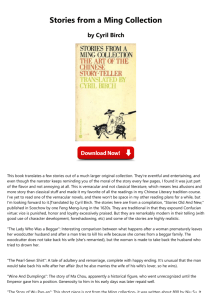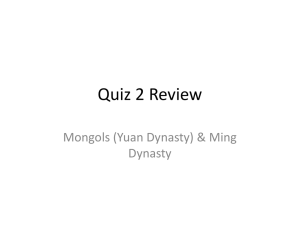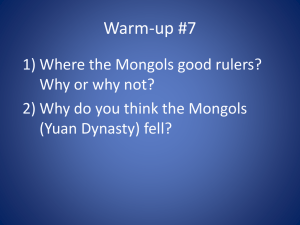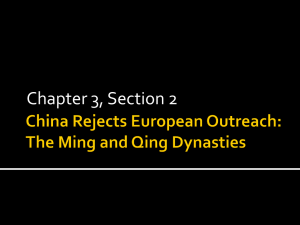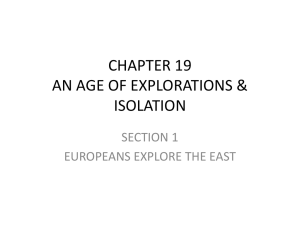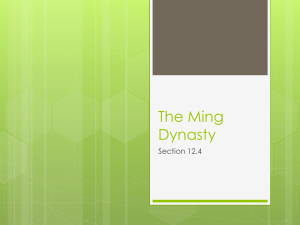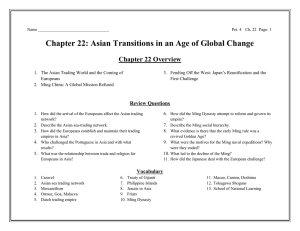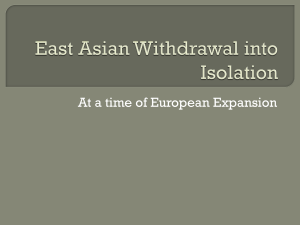PowerPoint August 2011 Top Ten Quiz
advertisement
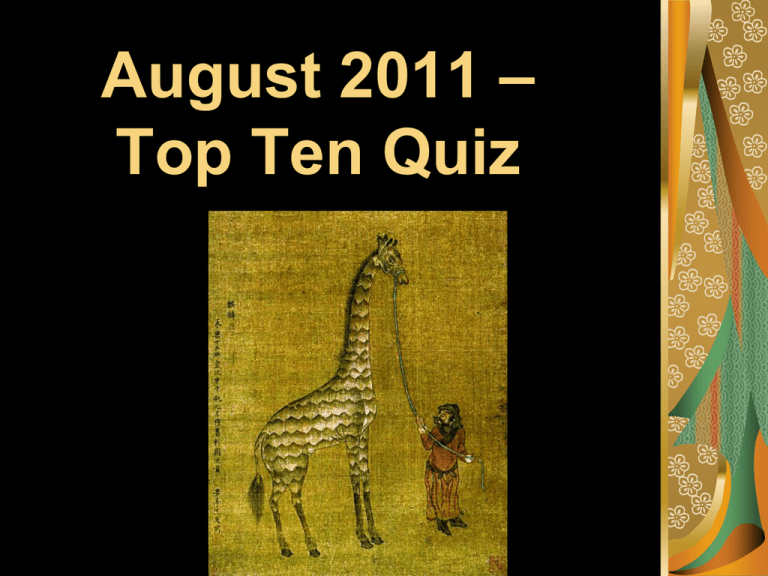
August 2011 – Top Ten Quiz The bubonic plague affected economic development in medieval times by (1)Encouraging the introduction of new types of crops (2) Causing production to decline and prices to rise (3) Sparking the ideas of socialism and reform (4) Destroying the guild system (2) Causing production to decline and prices to rise During the Ming dynasty, why did China enjoy a favorable balance of trade with Europe? (1)The Ming dynasty imported numerous manufactured goods from Europe. (2) China exported large quantities of opium to European traders. (3) Chinese silk continued to be in high demand in Europe. (4) The Ming dynasty paid tribute to European traders. (3) Chinese silk continued to be in high demand in Europe • Partition of India • Creation of the State of Israel • Division of Berlin Which development directly resulted from each of these events? (1) Large numbers of people migrated. (2) Nuclear weapons were developed. (3) Communist governments were established. (4) Ethnic tensions decreased. (1) Large numbers of people migrated. Which movement of African people was primarily caused by changes in climate and vegetation? (1)Migration of the Bantu people out of West Africa in 1000 B.C. (2) Journey of Mansa Musa’s followers to Mecca in 1324 (3) Resettlement of the Zulus within South Africa in 1843 (4) Flight of the Tutsis from Rwanda in 1994 (1) Migration of the Bantu people out of West Africa in 1000 B.C. In the European feudal system under manorialism, what is the most significant economic commodity? (1) Livestock (2) Land (3) Gold and silver (4) Sugar and spices (2) Land . . . No one in this country [Great Britain] who examines carefully the terms under which Hitler’s troops begin their march into Czecho-Slovakia to-day can feel other than unhappy. Certainly the Czechs will hardly appreciate Mr. Chamberlain’s phrase that it is “peace with honour.”. . . — “Return from Munich,” Guardian, October 1, 1938 The author of this excerpt is reacting to Prime Minister Chamberlain’s policy of (1) Self-determination (2) Ethnic segregation (3) Containment (4) Appeasement (4) Appeasement Use of terracing is an example of a society’s reaction to (1) Religious beliefs (2) Social stratification (3) Geographic conditions (4) Political situations (3) Geographic conditions . . . It recounts the life of the officials, the notaries, the deputies, the proprietors of Indian labour, the priests, the miners and the Spaniards who travel from post to post along the roads and rivers of Peru; the visitors, the judges, the Indian chiefs and their subjects, including the very poor. In my work I have always tried to obtain the most truthful accounts, accepting those which seemed to be substantial and which were confirmed from various sources. I have only reported those facts which several people agreed upon as being true. . . . — Huamán Poma, Letter to a King: A Peruvian Chief’s Account of Life under the Incas and Under Spanish Rule, E. P. Dutton This author is describing the process he used in (1) Formulating a scientific theory from earlier experiments (2) Developing a historical account from primary sources (3) Comparing details of differing religions (4) Explaining the importance of obeying laws (2) Developing a historical account from primary sources A. Toussaint L’Ouverture declares Haiti independent. B. Declaration of the Rights of Man and the Citizen is written in France. C. The thirteen colonies gain independence from Great Britain. D. Simón Bolívar frees Colombia from Spanish rule. What is the correct chronological order for these events? (1) A,B,D,C (2) C,B,A,D (3) A,D,C,B (4) D,C,B,A (2) C,B,A,D Speaker A: I do not agree with what you have to say, but I’ll defend to the death your right to say it. Speaker B: Government has no other end, but the preservation of property. Speaker C: Man is born free, and everywhere he is in shackles. Which historical period is best represented in the ideas expressed by these speakers? (1) Enlightenment (2) Counter Reformation (3) Age of Exploration (4) Early Middle Ages (1) Enlightenment
